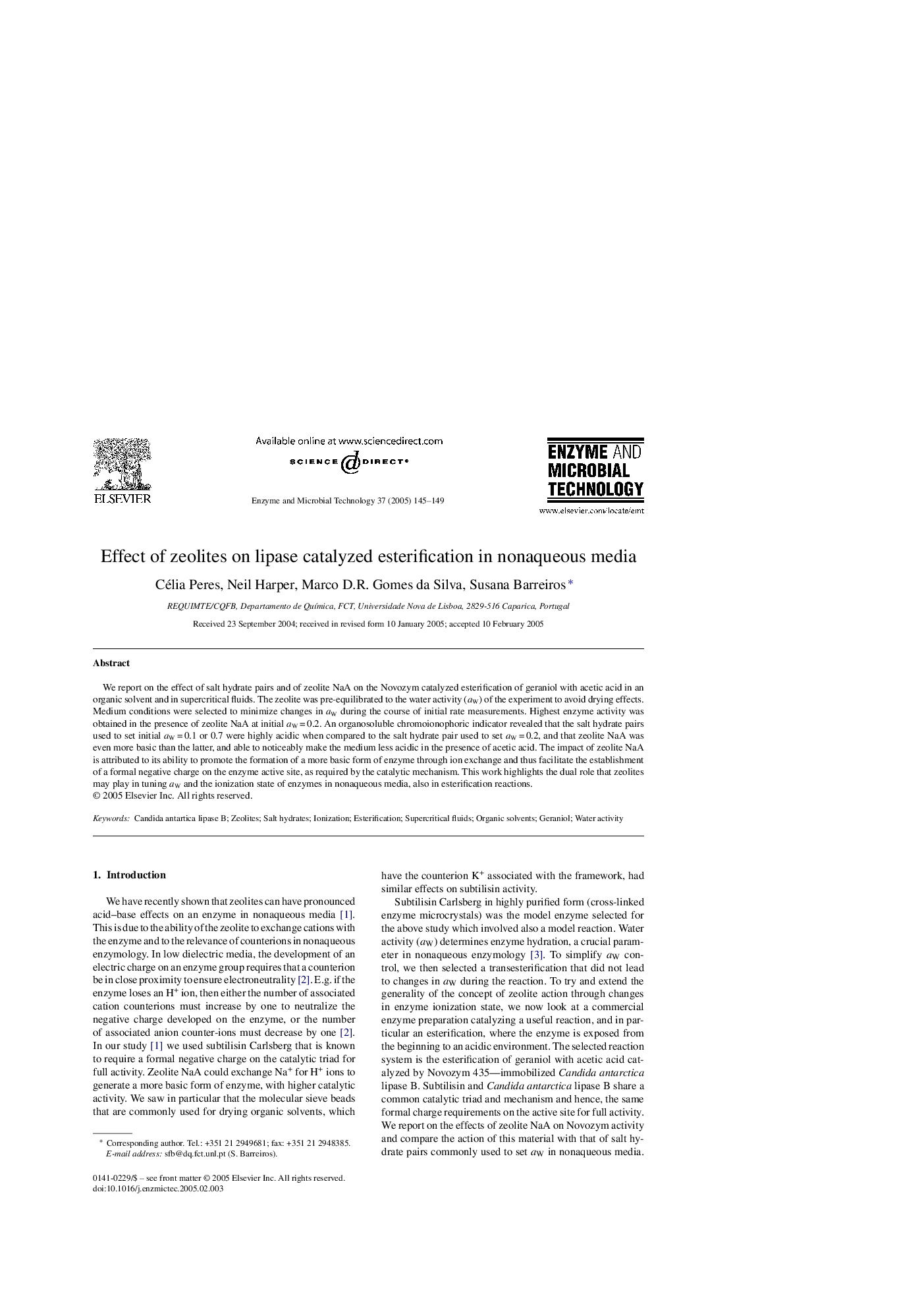| Article ID | Journal | Published Year | Pages | File Type |
|---|---|---|---|---|
| 10233573 | Enzyme and Microbial Technology | 2005 | 5 Pages |
Abstract
We report on the effect of salt hydrate pairs and of zeolite NaA on the Novozym catalyzed esterification of geraniol with acetic acid in an organic solvent and in supercritical fluids. The zeolite was pre-equilibrated to the water activity (aW) of the experiment to avoid drying effects. Medium conditions were selected to minimize changes in aW during the course of initial rate measurements. Highest enzyme activity was obtained in the presence of zeolite NaA at initial aWÂ =Â 0.2. An organosoluble chromoionophoric indicator revealed that the salt hydrate pairs used to set initial aWÂ =Â 0.1 or 0.7 were highly acidic when compared to the salt hydrate pair used to set aWÂ =Â 0.2, and that zeolite NaA was even more basic than the latter, and able to noticeably make the medium less acidic in the presence of acetic acid. The impact of zeolite NaA is attributed to its ability to promote the formation of a more basic form of enzyme through ion exchange and thus facilitate the establishment of a formal negative charge on the enzyme active site, as required by the catalytic mechanism. This work highlights the dual role that zeolites may play in tuning aW and the ionization state of enzymes in nonaqueous media, also in esterification reactions.
Keywords
Related Topics
Physical Sciences and Engineering
Chemical Engineering
Bioengineering
Authors
Célia Peres, Neil Harper, Marco D.R. Gomes da Silva, Susana Barreiros,
